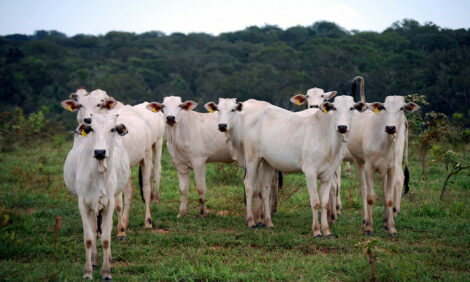



Will Politics Phase Out US Livestock Production?
US - How would you react to non-farm folks imposing rules on your livestock production? It is one thing if those rule makers were from your own state, but what if they did not even live in your state, much less have no economic interest in livestock production? That is what has happened in some western states, and may well happen soon in Ohio and in the not-to-distant future in other Cornbelt states, writes Stu Ellis, University of Illinois Extension.Methods of livestock production, honed over the years by enterprising farmers and university researchers, have become controversial with the help of the Humane Society of the United States which has turned to the political route to pursue its agenda. Noted Ohio State University economist Luther Tweeten says the HSUS plans a referendum in 2010 that will impact the Ohio laying hen industry and its 27 million birds. In the June issue of the OSU Ag Manager newsletterTweeten says Ohio agriculture has a major stake in the outcome of the HSUS effort.
The threat of a referendum, if Ohio agriculture does not cooperate with HSUS plans to change livestock production, is backed up by forced changes that occurred with Proposition 2 in California. That new law makes it a misdemeanor for anyone to confine livestock in ways that are typical of 21st Century production.
Tweeten says it is important to recognize that nearly everyone supports humane treatment of animals, but at issue is what constitutes humane treatment. He says the HSUS proponents believe legislation will enhance animal welfare, provide healthier food because animals will contract fewer diseases and will reduce soil, water, and air pollution. On the other hand, confinement philosophies are associated with protection of animals from temperature extremes, predators, soil-borne diseases and parasites. He believes the general public has looked to science-based research to narrow the differences, but only with partial satisfaction.
The Ohio economist says market forces have dictated animal production practices, forcing producers to ensure animals are well treated. And he says, “Socially acceptable production practices for animal welfare ultimately rest on the public's values and attitudes and not just on science. Such values range from indifferent observers to animal rightists who object to animal confinement and would end use of animals as sources of food, clothing (leather), fiber, draft-power, or companionship (pets).” To satisfy consumers with those preferences, Tweeten proposes, “to label animal products by production practices. Preferred animal welfare practices may be more costly to producers, but consumers can “vote” their preferences with dollars in the market.”
Tweeten says the proposal pending in Ohio is similar to what was approved by voters in California, where economists calculated that, “variable costs of production [for eggs in California ] would rise by at least 20 per cent and perhaps substantially more. Underlying these higher costs per dozen eggs are higher feed use per bird, higher cost per pullet, lower average productive life of a hen, higher mortality rates, fewer eggs of premium size or acceptable marketability, fewer birds per facility, and higher labor costs.” He says Ohio poultry producers would no longer be competitive with the 24 million laying hens in Indiana and the 21 million laying hens in Pennsylvania. And he says California economists believe the poultry industry in that state will disappear during the six year phase-in of the new rules.
Tweeten says the losers in the process will be a loss of nearly 8,000 jobs associated with poultry production, along with a diminished demand for corn and soybeans, since poultry consumes 22% of the Ohio production. He doubts Ohio consumers would face higher prices for eggs, since supplies would come from neighboring states. However, he expects the Humane Society to pursue national legislation to impose regulations on all US livestock producers, resulting in consumers obtaining replacement livestock products from Mexico, Canada, and other countries where current production practices are often inferior to US standards.


